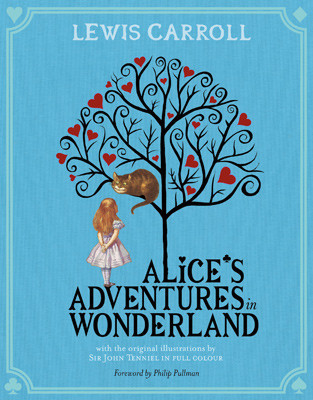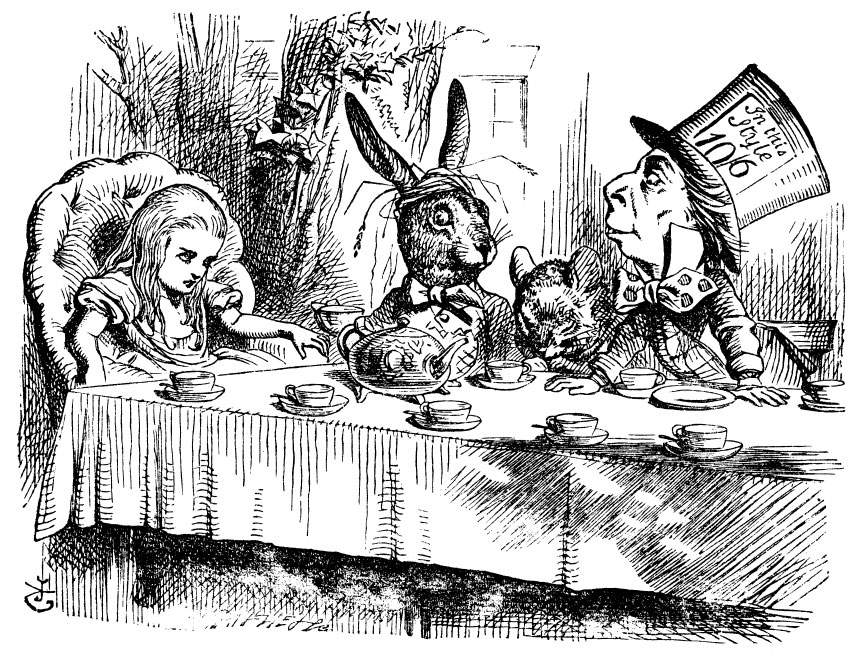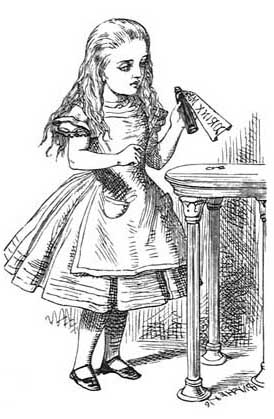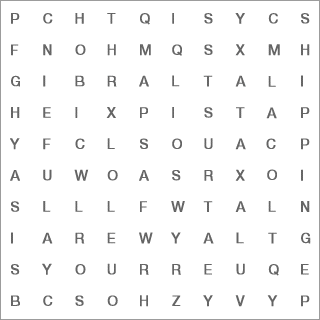Feb 16 - Down the Rabbit Hole: Lewis Carroll’s Alice Books
 This year marks the 150th anniversary of the publication of Lewis Carroll's Alice's Adventures in Wonderland, a landmark in the history of children's literature. To mark this, retired English teacher Charles Durante examines the wit and wonder at the heart of the Alice books…
This year marks the 150th anniversary of the publication of Lewis Carroll's Alice's Adventures in Wonderland, a landmark in the history of children's literature. To mark this, retired English teacher Charles Durante examines the wit and wonder at the heart of the Alice books…
Most readers are familiar with the name Lewis Carroll. He was the author of the two children’s books, ‘Alice’s Adventures in Wonderland’ and ‘Through the Looking Glass’. What they might not be aware of is that Lewis Carroll was the pseudonym of Charles Lutwidge Dodgson. A slight acquaintance with the biography reveals a dichotomy between Dodgson, a stammering, prissy, namby-pamby mathematics tutor at Christ Church, Oxford, and Carroll, the inventor of Alice, (‘It’s my own invention’, quips the White Knight, a caricature of Carroll himself), an iconoclastic, provocative, whimsical writer of children’s nonsense books. It’s tempting to read the Alice books as a coded critique, written by a shy, retiring don, to ridicule and satirize the conventional mores of respectable middle-class Oxford society, and the eccentric college fellows he dined with every day. The uninitiated reader, however, will read the books for the thrill and magic of the topsy-turvy world Carroll creates.
When we follow the rabbit down his hole, we dismiss the covert meanings Carroll may have intended; instead, we hold Alice’s hand and join her in her adventures. The characters are so indelibly imprinted in our minds (especially for those of us who were fortunate to meet Alice when we were young), that we easily forget that most of them are playing cards (in Wonderland) or chess pieces (in Looking Glass). We never consider how a card can bark the dreadful sentence, ‘Off with his head’, at the slightest provocation. The Queen of Hearts will not brook any insubordination: the merest faux pas deserves decapitation. Even the poor Duchess is under the sentence of death for having boxed the Queen’s ear. Disappointingly, we don’t witness this daring affront in the book!

Our exploration of Carroll’s ‘nonsense’ world reveals a pervasive madness which rules supreme. The crazy croquet game is a recipe for disaster. When you play with flamingoes and hedgehogs, this sedate game becomes a mad caper. Pandemonium also reigns in the Duchess’ house, with the irascible cook flinging saucepans, plates and dishes at everyone. The Cheshire Cat, that fleeting feline on a branch or in the sky, nonchalantly informs Alice that everyone’s mad, including herself. When Alice objects, the cat just says she must be mad otherwise she wouldn’t be there. And just in case we need confirmation, we have that quintessentially English meal, tea, called ‘A Mad Tea Party’.
So is one of the messages of the two Alice books that madness is widespread, sanity a fragile affair, and it only takes a slight change of perspective to turn our world into a lunatic asylum? Possibly. Chesterton once wrote that the poet tries to get his head into heaven whereas the logician tries to get heaven into his head and it is his head that bursts. Carroll’s characters are remorseless logicians; they understand language literally, regardless of the consequences for common sense; they are forever thinking up conundrums and paradoxes; they exploit every ambiguity language throws up.
Humpty Dumpty, that intellectual egghead, for example, is a merciless logician. He prefers ‘unbirthday presents’ as that means receiving three hundred and sixty four presents a year rather than one! Language, however, is his speciality. In his sparring session with Alice, he claims he can make words mean whatever he wishes. Carroll here unobtrusively refers to that hoary medieval debate that universal terms do not refer to objective existences but are only ‘flatus vocis’, verbal utterances. Humpty Dumpty is a nominalist! The proud egg will not be bound by the rules of the dictionary so that ‘glory’ means a ‘nice knock-me-down argument’. The Mad Tea Party also throws up another philosophical teaser. Time has stood still at 6 o’clock so that it’s always tea time. Since the Hatter was accused by the Queen of ‘murdering the time’ (mangling the metre of a song), the universe has stopped moving. And as you can’t murder a concept, time is no longer it but him!

Most of the chapters in the two books are punctuated by verses and songs which break up the narrative flow. A good edition will provide information about the original poem Carroll was parodying. One of the best known is the Mock Turtle’s song, ‘’Tis the voice of the Lobster: I heard him declare’ which parodies a dismal poem by the hymn writer, Isaac Watts, ‘A Sluggard’, which recommends hard work and thrift. In Carroll’s version Watts’s moralizing disappears and we have a vain lobster titivating herself in front of a mirror. But the most striking is the nonsensical, mirror-poem ‘Jabberwocky’ which bamboozles the reader at first with its strange lexicon. This poem may have started as a parody of contemporary philological scholarship concerned with promoting the study of Anglo-Saxon texts at Oxford-we mustn’t forget those two messengers, Haigha and Hatta, with their Anglo-Saxon attitudes! But it is that inveterate linguist, Humpty Dumpty, who comments on the idiom of the poem, pointing out that ‘slithy’ means ‘lithe’ and ‘slimy’, thereby revealing the essence of the portmanteau word, a common phrase for words packed like suitcases with more than one meaning. Those who persevere and decipher the meaning of Jabberwocky are struck by its bloodthirstiness: the poem celebrates the killing of the monster Jabberwock (Tenniel’s illustration is appropriately blood-curdling) by the ‘beamish boy’.
There are other, no less disturbing elements in the Alice books. Tweedledum and Tweedledee deride Alice’s complacent conviction that she is real. The mouse’s ‘tail’ becomes a ‘tale’ set out like a figurative poem with Fury condemning the mouse to a judicial execution. Alice’s elongated neck is mistaken for an egg-guzzling serpent by the hysterical pigeon. Carroll’s bestiary is post-Darwinian in its many examples of the universal struggle for survival.
Carroll, however, was writing primarily for children and these unpalatable undertones are far outweighed by the comedy and sheer fun. The Queen of Hearts never cuts off anyone’s head. The Red King continues to snore and sleep so that Alice will not vanish into thin air (the ghost of Bishop Berkeley’s idealism hovers over this incident). The Mock Turtle’s account of the school curriculum is unadulterated comedy. Alice addresses the mouse in the pool of tears as if she were declining a Latin noun. The school subjects are ‘reeling’ and ‘writhing’. The most hilarious transformations are ‘Laughing’ (Latin) and ‘Grief’ (Greek). These stand out as they formed the most important part of the public school curriculum of Carroll’s time and we can detect a personal reference. Latin was not a laughing matter and many a callow pupil must have suffered grief at the hands of the Greek master.
Among the odd creatures swimming in the pool of tears are a Duck (the Reverent Duckworth who accompanied Carroll on the famous boat trip down the Thames that gave birth to the adventures), Lorry the parrot, Alice’s sister Lorina, and the Eaglet who is Edith Liddell. But the most engaging is the Dodo, the extinct animal, but also Carroll’s self-deprecatory reference to himself as he stammered his real name, Dodgson. The books were originally written to celebrate that auspicious occasion, ‘all in the golden afternoon’, and they were inspired by Carroll’s child muse, Alice Liddell. Since their publication in 1865 and 1871, they have enthralled children and continue to pose questions of interpretation to critics, philosophers and the ‘curiouser and curiouser’ reader!
Charles Durante will be talking about this and other books as part of World Book Day as from 4pm on the 5th March at the John Mackintosh Hall.

Latest News
- Commencement of Part 2 of the Register of Property Occupation Act
- Autumn Poetry Competition 2025
- Youth Symposium Returns from Impactful Visit to Morocco
- Cultural Education Continues to Promote Gibraltar’s Art
- The Budget 2025 – Deputy Chief Minister’s Address
- Acquarius Trust Company Limited Announces Completion Of Management Buyout; New Ownership Poised To Continue Growth Plans
- VSB Limited Responds To Government Statement
- Gibraltar NASUWT Welcomes Public Sector Pay Increases
- Unite’s Reaction to the Chief Minister’s Budget Address “Mainly Positive”
- Statement on Section 66 Proceedings Regarding Victoria Stadium Tenancy



